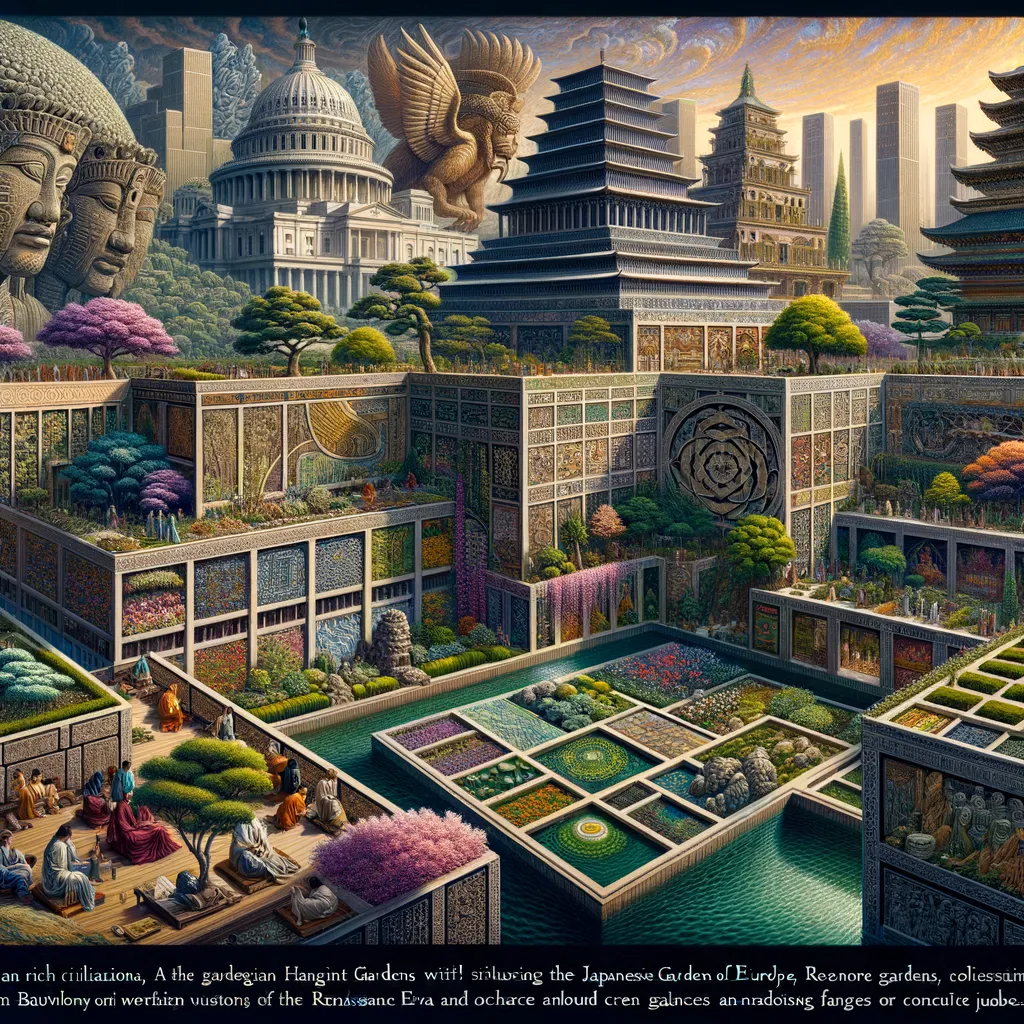The Role of Gardens in Cultural Exchange Throughout History
Gardens are not just spaces for growing plants; they’re vibrant canvases that reflect the cultural, historical, and artistic values of a society. From the Zen gardens of Japan to the lush English gardens, these green spaces have been instrumental in fostering cultural exchange and understanding across civilizations. In this comprehensive guide, we’ll explore the fascinating ways gardens have served as a medium for cultural dialogue, showcasing the indelible mark they’ve left on societies around the world. Whether you’re a gardening enthusiast or a history buff, prepare to embark on a verdant journey through time.
Gardening, much like Camping, isn’t just a solitary pursuit; it’s a way to connect with the world. Gardens invite us into the realm of tactile experience, cultural exploration, and communal creativity. They teach us about adaptability, patience, and the intricate balance of ecosystems. Interested in how outdoor activities foster connection? Learn more here.
The Ancient Gardens: A Symbol of Power and Prestige
The history of gardens as a cultural exchange tool dates back to ancient civilizations, where they were often built to demonstrate power and prestige. The Hanging Gardens of Babylon, one of the Seven Wonders of the Ancient World, is perhaps the most famed example, believed to have been an astonishing feat of engineering and a symbol of the Babylonian king’s wealth and technical prowess. Similarly, in ancient Egypt, gardens were integral to religious and funerary practices, embodying beliefs about the afterlife and the importance of creating paradises on earth.
In the East, Chinese and Japanese gardens were deeply embedded in philosophical and spiritual ideologies. The classical Chinese garden, for example, was designed to encapsulate the harmony between man and nature, a core principle of Taoism and Confucianism. Japanese Zen gardens took this a step further, using minimalist landscapes to encourage meditation and spiritual connection. These gardens were not just places of beauty but were laden with symbolic elements that reflected the cultural beliefs and practices of their creators.
Medieval Gardens: From Monastic Enclosures to Herbal Remedies
During the medieval period, gardens began to take on new roles. Monastic gardens in Europe were essential for providing the fruits, vegetables, and medicinal herbs necessary for the sustenance and health of their communities. These gardens were not just practical but were imbued with spiritual significance, reflecting the monastic commitment to working the land as a form of devotion. Meanwhile, Islamic gardens, with their emphasis on geometric designs, water features, and fragrant flowers, served as embodiments of paradise on Earth, reflecting the religious and philosophical principles of Islam.
The exchange of plants and gardening knowledge during the medieval period laid the groundwork for a more interconnected understanding of horticulture and botany. The Silk Road, for example, facilitated the exchange of exotic plants and spices between the East and West, enriching the biodiversity of gardens across continents and introducing new flavors to diets around the world.
Gardens continued to evolve through the Renaissance and into the modern era, each period adding a new layer to the complex tapestry of cultural meanings and representations they embodied. Whether as symbols of power, places of scientific inquiry, or sanctuaries for peace and reflection, gardens have continually adapted to reflect the values and tastes of their times.
The role of gardens in cultural exchange is a testament to humanity’s perpetual quest for beauty, knowledge, and understanding through the cultivation of land. As we delve deeper into the stories of iconic gardens throughout history, we uncover not only the aesthetic and ecological contributions they have made but
The Role of Gardens in Cultural Exchange Throughout History: A Guide for Parents
Gardens are more than just areas where plants grow; they are platforms for vibrant cultural exchange and shared human experience. They serve as mirrors, reflecting the societal, historical, and artistic values across different civilizations. Understanding the role of gardens in cultural exchange is essential for fostering an appreciation of global histories and environmental stewardship among families. Here are five key points every parent should consider when exploring the historical significance of gardens with their children:
1. **Gardens as a Reflection of Cultural Identity:**
Gardens provide insight into the cultural beliefs and values of a society. By exploring the design, plant selection, and overall purpose of gardens from various parts of the world, children can learn how different cultures express their identities and values through this living art form. For instance, the minimalist approach of Japanese Zen gardens contrasts with the lush, structured designs of French formal gardens, each reflecting philosophical ideologies and societal priorities.
2. **Educational Value of Historical Gardens:**
Historical gardens are living museums, offering tangible lessons in history, geography, botany, and environmental science. Parents can use these spaces to teach children about the technological innovations of ancient civilizations, like the advanced irrigation systems of the Islamic gardens or the botanical diversity achieved through the plant exchanges along the Silk Road. These examples highlight human ingenuity and the interconnectedness of global cultures through shared knowledge and resources.
3. **Gardens as a Medium for Environmental Awareness:**
Gardens play a pivotal role in teaching children about the importance of environmental stewardship. Exploring historical gardens can provide insights into the ways different cultures have interacted with their natural surroundings and the impact of those interactions on local and global ecosystems. By understanding the role of gardens in promoting biodiversity, natural beauty, and ecological balance, children can develop a deeper appreciation for the environment and the importance of conservation efforts.
4. **The Role of Gardens in Promoting Peace and Harmony:**
Many gardens throughout history were created as sanctuaries of peace and reflection, away from the complexities of everyday life. Parents have the opportunity to teach their children about the philosophical and spiritual ideals that gardens represent, such as harmony, balance, and tranquility. Emphasizing these aspects can help cultivate a sense of inner peace and well-being, encouraging mindfulness and a deep connection to the natural world.
5. **Gardens as Community and Cultural Connectors:**
Gardens have always been communal spaces where people gather, share experiences, and learn from each other. They are natural platforms for cultural exchange and understanding. Through community gardening initiatives, families can engage in shared cultural practices, learn about different gardening techniques from around the world, and contribute to creating inclusive, vibrant community spaces. This not only enriches the cultural life of a community but also fosters a spirit of cooperation, respect, and mutual appreciation among its members.
Exploring the historical and cultural significance of gardens offers a unique lens through which families can view the tapestry of human history and our relationship with the natural world. It opens up conversations about the values, technological advancements, and environmental considerations that have shaped societies across time. By engaging with these living spaces, parents and children together can cultivate not only an understanding of global cultures and histories but also a commitment to nurturing and preserving our shared environment. Gardens, with their universal appeal and intrinsic beauty, continue to inspire and educate, bridging divides and nurturing connections across generations and cultures.
Disclaimer
The articles available via our website provide general information only and we strongly urge readers to exercise caution and conduct their own thorough research and fact-checking. The information presented should not be taken as absolute truth, and, to the maximum extent permitted by law, we will not be held liable for any inaccuracies or errors in the content. It is essential for individuals to independently verify and validate the information before making any decisions or taking any actions based on the articles.




